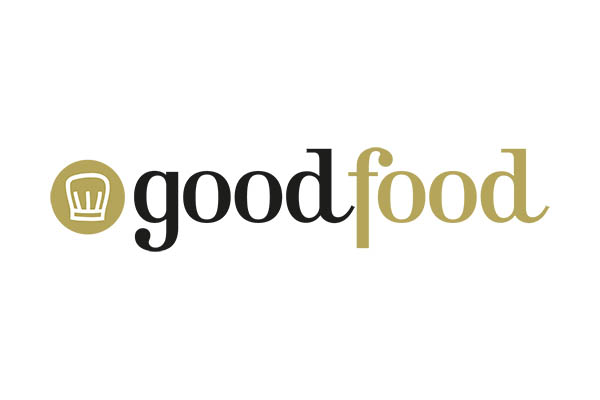We’re all looking for easy budget wins that will leave a little more in the bank to fund those necessary extravagances. Here’s how to shop from the pantry and use up what’s already there.
Written by: Kimberley Gillan – Good Food
Food rescue charity OzHarvest says that Aussies waste vegetables, bread, fruit, bagged salad and leftovers at an extraordinary rate. Recent research from the UK found that vinegar, stock cubes and tinned vegetables topped the list of ingredients sitting in most pantries.
Thankfully chefs Mel Alafaci, the author of Culinary Quickies, and Bridget Foliaki-Davis, from Bridget’s Healthy Kitchen, have some clever tips for using up these common strays.
“My friends hate me because I can come over to their place and they’ll go, ‘I’ve got nothing in the fridge’, but I can do a seven-course degustation,” Alafaci says.
“It’s an exciting opportunity to cook with those ingredients that you have – it makes you thrifty and you’re going to feel really good about yourself afterwards.”
Here’s how.
Vinegar
Vinegar doesn’t exactly expire, but the longer you leave it, the less flavour and acidity it’s likely to have.
“Making your own salad dressings is a fantastic way to use up your vinegars – relying on bottled ones is not living; they’re so dismal,” Alafaci says.
“For a classic French [vinaigrette], mix two parts white or brown vinegar to one part extra-virgin olive oil, some dry herbs and a teaspoon of mustard. Shake it up and voila, you’ll feel very ‘cheffy’. You can also drizzle vinegar on some lovely house-made hot chips from the air fryer.”
Pickling vegetables and making chutney is another easy hack for using up vinegar and almost-kaput carrots, onions, cucumbers and beetroot. Use them to elevate your burgers, bowls and brekkies.
“You can literally pickle any type of vegetable,” Foliaki-Davis says. “The idea is you pop 200ml of vinegar in a pot with the chopped vegetable, add a bit of a sweetener such as honey, maple syrup or erythritol, and bring it to the boil so the sugar dissolves. Pop it in a sterilised jar and use it as a side with your omelette.”

Stock cubes
Stock cubes are a crafty home cook’s secret salty weapon for adding a hit of flavour to soups, gravy and bolognese, especially if you’re feeding fussy kids.
“I love to take a can of chickpeas, butter beans or cannellini beans, half a stock cube and 80ml of cream and blitz it up, then serve as the sexiest puree,” Alafaci suggests.
“It’s quick, cheap and easy, and it’s just like what they’re doing in restaurants.”
Canned vegetables
Canned foods tend to clutter up our pantries, but Alafaci thinks of them as a “necessary evil” to have on hand for quick meals.
“You can make amazing things with tinned vegetables – I see them as my superpower because they’re so versatile,” she says. “But you have to make sure you keep using the ones you’ve already got, and not constantly topping up [your supply].”
Foliaki-Davis turns a can of tomatoes into a simple passata by warming it on the stove-top with some herbs, salt and pepper, and a little bit of soy sauce.
“Cook it for half an hour until the acid goes out of the tomatoes and blend it – you can add it to lasagne or curries,” she says.

Old vegetables
Did you know that almost half of all fruit and vegetables are wasted?
Help reverse that stat by making like Foliaki-Davis and having regular “fridge forage” stir-fries, soups and frittatas.
You can also make a beautiful roast Mediterranean vegetable traybake using languishing carrots, cauliflower, capsicum or zucchini (that aren’t yet slimy).
“Set the oven to 250C so it’s swear-word hot – if you do them at 180 degrees, it will make them steam – and bake your carrot, cauliflower or zucchini,” Alafaci says.
“I also like to peel sweet potato into ribbons – drizzle a little bit of olive oil and put them into the air fryer or hot oven. In four minutes, you’ve got sweet potato chips to give some crunch to a curry or stir-fry or stack.”
As for bagged salads (which also top the “most binned” list), if they’re looking a little listless, Alafaci suggests stir-frying them for an antioxidant-rich side.
“Heat some sesame oil or peanut oil in a frypan and add the kale slaw or mixed leaves, serve with some ready noodles and soy sauce, feed it to your kids and call it noodle box,” she says.
“You can also put old vegies and bagged salads through a food processor to make a ‘gravel’ to add to your bolognese or slow-cooked meal.”

Bread
Chewy, days-old bread can be refreshed in the oven. Spread garlic butter to make a garlic bread side, or rip it into croutons to sprinkle on salads, soups and pastas for a bit of extra crunch.
“To make croutons, drizzle or spray with some extra virgin olive oil and a bit of salt and put it into the air fryer,” Foliaki-Davis suggests.
“And if you don’t use them all up on your salad, blitz them into breadcrumbs to put in a zip-lock bag in your freezer for future use.”
Fruit
The oven can be a helpful tool for extending the life of less-than-fresh fruit.
“I like to slice and roast apples, pears and pineapple – put it in a 250C oven until it’s nice and brown, then add it to salads; or serve roasted pear with prosciutto and goat’s cheese,” Alafaci suggests.
Leftovers
A meal plan for the week can help you predict some leftover repurposing, so that they don’t sit there for three days before you bin them.
“I love making what I call a ‘gut healing bowl’ – I’ll use [a scoop of] leftovers, some pickles, raw vegetables, a boiled egg and some nuts and seeds or olives or whatever else is in my fridge,” Foliaki-Davis says.
“You have this amazing, delicious variety of food and … leftovers get used.”

